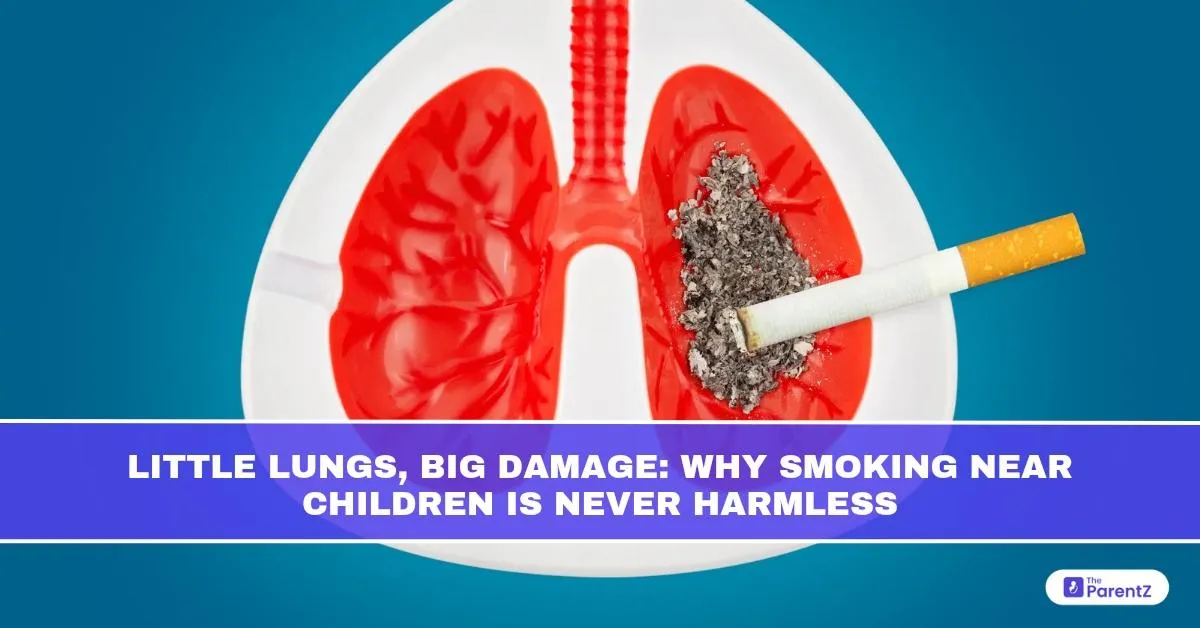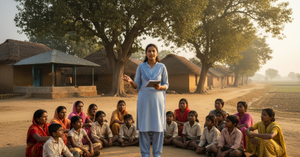You might think cracking a window or stepping onto the balcony is enough. That a few puffs won’t make much difference. But for a child’s delicate lungs, no level of cigarette smoke is ever safe, not even if they’re in another room.
Children don’t choose to breathe in the toxic chemicals released when someone smokes nearby, yet their bodies absorb them faster, react more severely, and heal slower.
1. Secondhand Smoke Is More Potent Than You Think
When adults smoke, over 7,000 chemicals are released, including carbon monoxide, formaldehyde, benzene, and ammonia. And the smoke that lingers in the air (even after the cigarette is out) can be more dangerous than what the smoker inhales.
Children inhale this toxic mix with every breath, and because their lungs are still growing, they’re less capable of filtering or repairing the damage. According to the American Lung Association, even brief exposure can lead to inflammation in the airways and trigger respiratory distress.
2. Breathing Becomes a Daily Struggle
Children exposed to secondhand smoke are more likely to suffer from chronic coughs, frequent colds, bronchitis, and asthma flare-ups. In fact, passive smoking is one of the top preventable causes of respiratory illness in children under 10.
Many pediatricians report children who wheeze during playtime, miss school due to frequent infections, or are hospitalised repeatedly all traced back to a home or caregiver who smokes indoors or nearby.
The Indian Pediatrics Journal confirms that children living with smokers have double the rate of pneumonia and lower respiratory tract infections than those in smoke-free homes.
3. Tiny Ears, Big Infections
Surprisingly, smoke doesn’t just harm the lungs; it also inflames the Eustachian tubes in children’s ears, leading to repeated ear infections. Children exposed to secondhand smoke are more prone to fluid build-up behind the eardrum, often requiring antibiotics or even surgical intervention (ear tubes).
These infections may seem routine, but can impact hearing and language development over time, especially during early learning years.
4. Smoke Lingers Even If You Don’t See It
Many believe smoking outside or in a separate room keeps children safe. But harmful particles cling to clothes, hair, furniture, and even soft toys, a phenomenon known as thirdhand smoke. When children crawl, play, or snuggle against a caregiver who smokes, they come in direct contact with toxic residues.
Babies are especially vulnerable; they breathe more rapidly and put objects (including hands and clothes) in their mouths. This increases their exposure to harmful chemicals, even before anyone lights a cigarette.
5. Impact Beyond the Body: Emotional and Behavioral Effects
Growing up around smoke doesn’t just harm a child’s physical health; it can also affect their mood, concentration, and emotional regulation.
A 2022 study in Environmental Research found that children chronically exposed to tobacco smoke had higher rates of irritability, sleep difficulties, and attention-related issues, even when their parents didn’t smoke in front of them directly.
These children may also grow up feeling confused: being told smoking is bad at school, but seeing it as a regular behavior at home. This conflicting message can shape how they view health and authority.
6. The Risk of Future Smoking Habits
Children who grow up watching family members smoke are more likely to try it themselves, not just due to imitation, but because of desensitization. It becomes “normal,” and that perception removes the fear or stigma.
According to research by the Centers for Disease Control and Prevention (CDC), children of smokers are twice as likely to become smokers themselves, often starting in their teens. This perpetuates a generational cycle of nicotine addiction and health problems.
7. Smoke-Free Doesn’t Mean Judgement: It Means Protection
The goal isn’t to shame parents or caregivers who smoke, but to highlight the reality of harm and offer realistic solutions. Here’s what can help:
- Establish a strict no-smoking zone inside and around the house including balconies and stairwells.
- Change clothes and wash hands after smoking before touching your child.
- Avoid smoking in cars, even if the windows are open.
- Speak to your healthcare provider about smoking cessation programs, many are now family-focused and free of cost in India.
- Use smoke-free imagery in front of children and try not to light up around them, even casually.
Even small steps toward reducing exposure can make a huge difference in your child’s breathing, growth, and confidence.
Conclusion
Their lungs are tiny. Their bodies are still developing the ability to defend themselves. And their hearts trust that you’ll keep them safe. While you may feel your smoking habits are “under control,” the effects on children are not always visible right away. But with every cigarette lit near them, their risk for illness rises quietly.
Choosing to protect them from smoke, not just out of sight, but fully, is one of the most powerful ways to invest in their future. Because when it comes to their health, even a puff is one too many.








Be the first one to comment on this story.